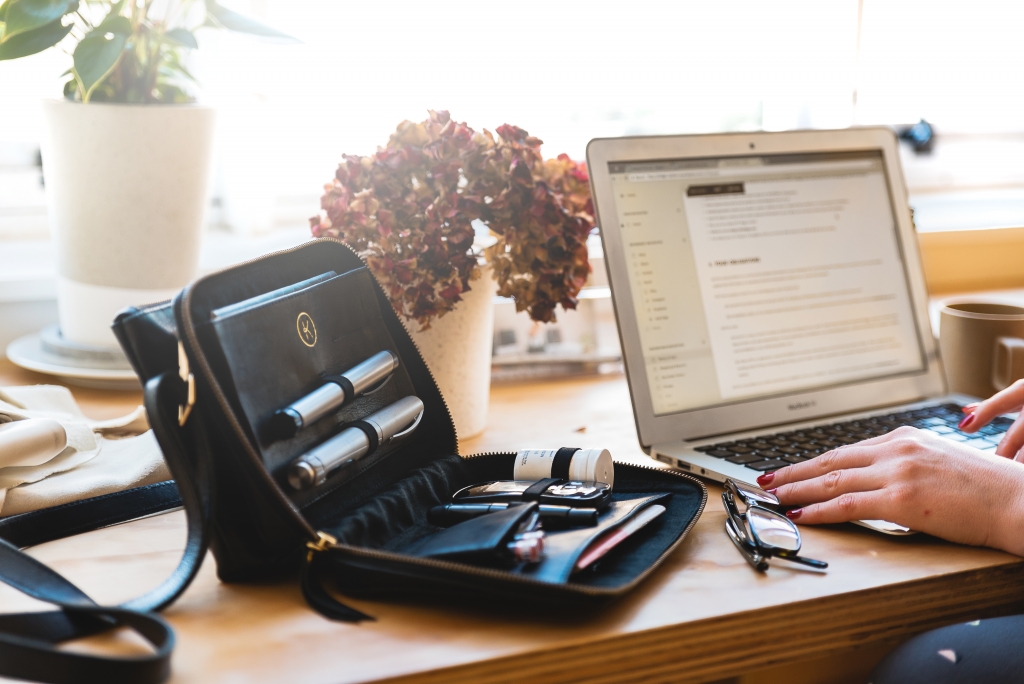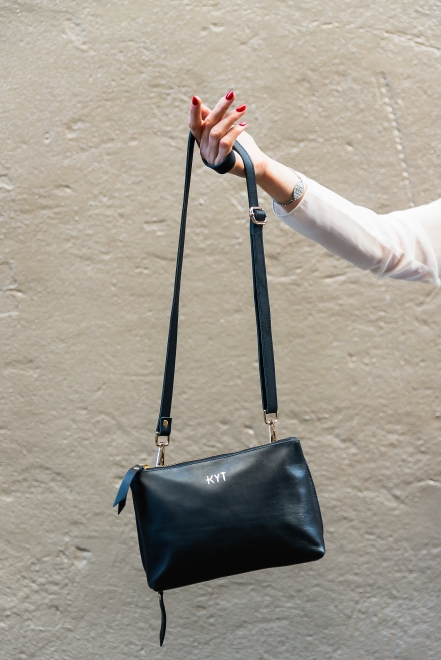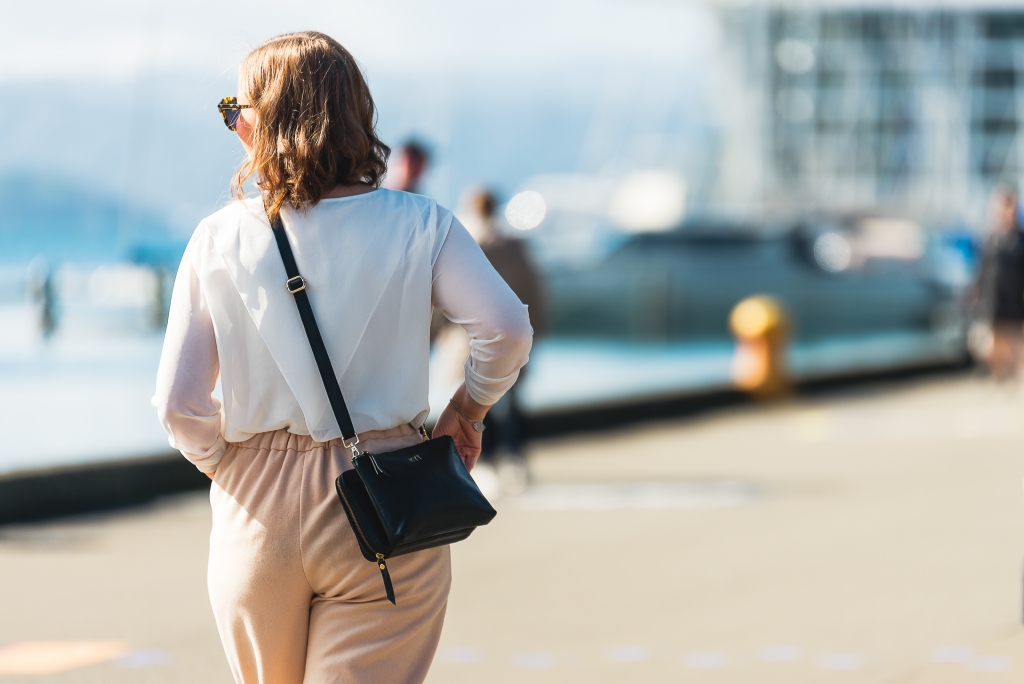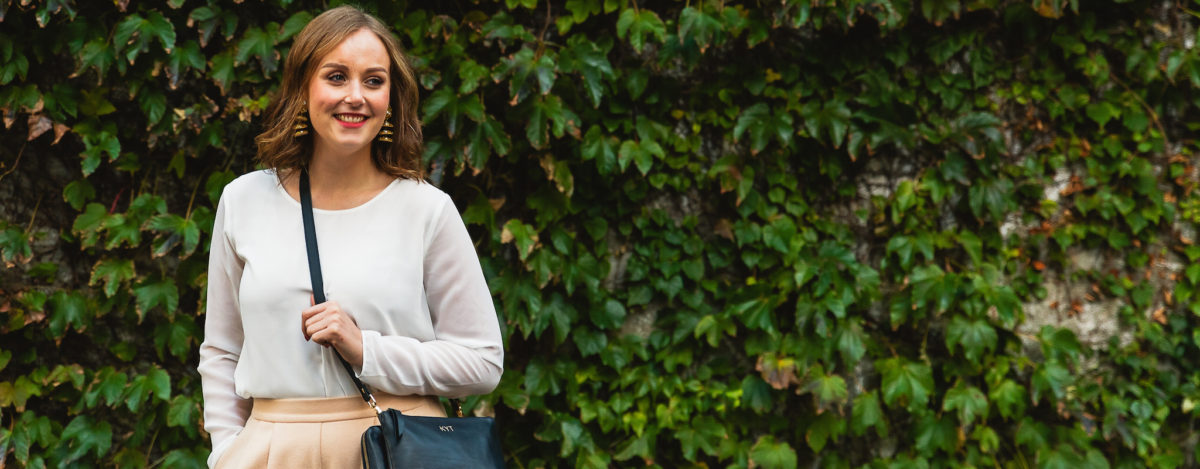Empowering T1Ds through Design
I remember the first time I said it out loud: “I reckon I could make a handbag range, just for diabetes.”
I said it to one of my classmates at fashion school. I was in a course that taught all of the technical things you need to know to work in the garment industry, which meant sewing clothes on industrial machines and drafting patterns. When I started the course it was met with a few raised eyebrows, because I’d already spent many years at University studying business. But diabetes and my swanky graduate job hadn’t mixed well and I’d been left in a weird state of not knowing what to do with myself. So I did what I’d always wanted to, and pursued fashion.

My classmate shrieked: one of her friends also had diabetes, and had whinged about bags for as long as she could remember. I took this as a good first reaction.
I’d been looking for a fashion-forward option for my diabetes equipment ever since being diagnosed at 20, but I hadn’t got much further than a pencil case. I drooled over designer bags—their leathers, their silhouettes, their hardware—but knew most of them would never fit my stuff, least of all the ones I wanted to wear.
I made a few prototypes at fashion school, most notably a beige, pleather, circular bag with a quilted front, black piping and gingham lining. Basically, I’d thrown every technique (and fabric) I could at the bag design, and run out of time and ideas for anything diabetes-related. I also kept the zipper closed when I was turning the bag out and had to cut the side open! Not a great first attempt.
I dabbled with a few bags in the background until I heard about Project Fashion Wellington, a local fashion programme aimed at helping emerging designers get off the ground. They were looking for six designers to mentor towards a capsule collection and public runway show; I applied.
This was the second time I said it out loud: “I want to make a handbag range, just for diabetes. Take a look at how I carry my stuff now—it could be so much better. I want to bring these bags to life through your fashion project.”

So I did. I had four months to teach myself to work with leather, find the right machinery and tools, and make these diabetes bags happen. I was able to find a leather mentor who is a fourth-generation leather worker—he was very kind and patient with me as I learnt to set rivets properly and hammer seams so that they would sit nicely. I sent six bags down the runway (along with six outfits, would not recommend this as a workload!) with a video that explained what diabetes is, what we carry everyday and why it was important to design something just for us.
After the show I was approached by a few people who had loved ones with diabetes—they were as excited about the bags as my classmate was. People without diabetes were interested too, they loved the look of the bags and wondered if I could make ‘normal’ versions for them! I realised that there might be some strength to this bag idea.
So I said it aloud a third time:
“I’ve made a range of fashion bags, just for diabetes. I think there might be something in them, and I want to take them to the world. So many people live with this equipment burden that follows them everywhere—I want to reach them and give them a discrete, chic way to carry it.”
This time I’d said it to the head of a business mentoring programme. I was being interviewed to prove that I had a potentially global business, looking to solve a real problem. They agreed with me, and together we set out a plan for turning my prototypes into real products.
I reached out far and wide to talk to other people with diabetes about their experiences and equipment. What was annoying about it? Would my bags help? Do you like them? These were scary questions to ask, especially as these bags had started to feel pretty personal! But I was met with lovely feedback, as well as moving, important stories about how much managing diabetes and equipment can impact everyday life.
I got lots of tips from others on how their ideal diabetes bag would work, what it would fit, and what it would look like. I moved away from sewing every stitch myself, and found a production partner to help me make the bags on a bigger scale. Like my first mentor, they’re leather artisans who have been crafting bags with love for their entire lives. Together we’ve designed a launch bag that was most popular with everyone I spoke to, and it’s been refined with lots of community feedback.
Now I can say: “I’ve created KYT: designer bags, designed for diabetes.”

KYT stands for Keeping You Together (I think you’ll know how I came up with that one). We launched with the KYT Crossbody bag in May, almost a year after I first posed the idea to Project Fashion. I’m so proud of this bag—it represents a lot of hard work, love and learning.
But what fuels me more is the reaction I’ve had from the diabetes community about KYT. Every kind word, exclamation of excitement and emoji has served as a reminder of why I started this: diabetes is a complicated, unrelenting experience and we deserve things that help us feel better about it. For me, it was to feel like one of those designer brands I drooled over was paying attention to me and my needs, and designing for it. I hope that, with KYT, I can make others feel this way.





